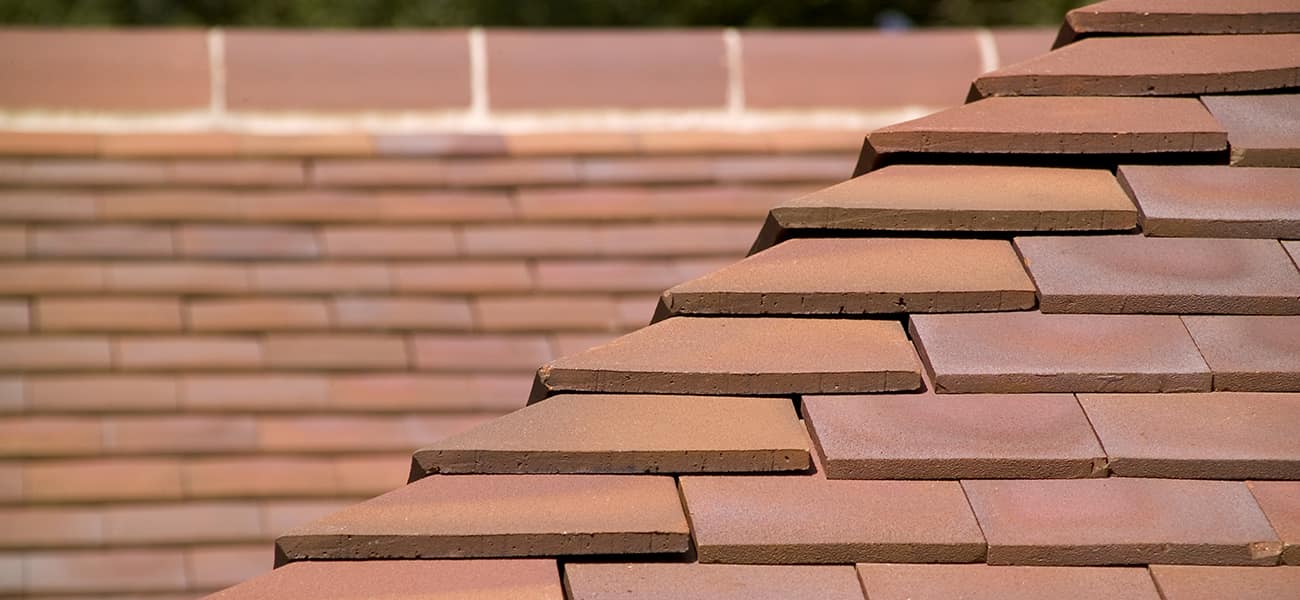How to calculate roof pitch


For many home construction, renovation and extension projects, it may be necessary to check the pitch on a roof. The pitch of the existing roof is an important number to know, but it's probably not something that you have to hand, and it's not likely to be something you can simply go look up in your home documentation.
If you need to find the roof pitch, you may need to break out some basic technical drawing or maths skills from your school days, but don’t worry – it shouldn’t be too complicated.
What is roof pitch and why do I need to work it out?
Roof pitch is the steepness of the roof. The standard pitch for most UK homes is between 25° and 40° ; steeper roofs may go as high as 70°, while low-pitch roofs can be as little as 15°. If a roof’s slope is less than 10°, it is considered a flat roof.
The roof pitch plays an important part in how a roof performs. Put simply the steeper the roof, the quicker rainwater and snow is discharged off the tiles and the less chance there is of water ingress due to capillary action (the movement upwards and sidewards of water between close fitting surfaces). All roofing products must be laid at or above their minimum pitch to ensure the roof performs as it should, so it is essential to know the roof pitch before a specification can be produced.
Figuring out roof pitch – what you’ll need
Roofs come in a wide range of shapes and types, from the most common gable roofs and hip roofs to more complex designs like mansard roofs, gambrel roofs and even conical roofs.
While it can be much more complicated to determine roof pitch with these latter designs, if you can find the right triangulation in the roof’s geometry, you can calculate the roof pitch in degree by simple geometry, by calculation, or by measuring with a pitch finder.
Working out the roof pitch by geometry
If it is safe to enter the lofts space, measure the height of the roof, this is from the underside of the ridge to the bottom edge of the ceiling joists, or to the decking if boarded. Next, measure across the span (width of the roof) and divide this by two. Now you will have two numbers, for example:
Height of roof = 3m
Half span = 4m
From here you can literally draw the two lines at right angles to each other using these ratios (e.g., 3cm and 4cm, 6cm and 8 cm etc.), join up the triangle and simply measure the angle with a protractor. In this case the angle would be 37 degrees.
It may also be possible to roughly establish the half span of the roof and the height from the outside of the building which may be safer than entering the loft space. First, measure the half span of the building (or measure it all then half it), then, count the brick courses up from the eaves line, if the bricks are a standard size, multiply the number of courses by 75mm (65mm + 10mm mortar joint) or 0.75m to give you the height of the roof.
Working out the roof pitch by Trigonometry
For anyone who might remember trigonometry lessons from their schooldays with a sense of dread, fear not, the smart phone (or a scientific calculator) has made finding the angle we need much simpler.
Here is the method using the same numbers as before:
Height of roof = 3m
Half span = 4m
First, divide height by half span
3 / 4 = 0.75
Find and press Tan-1 on your calculator (this may mean pressing 2nd function) If you are using a smartphone, you may need to turn it landscape to access the scientific functions.
The answer should be 36.87 (say 37 degrees).
Working out the roof pitch using a pitch finder
As previously stated, most smart phones now have an angle or pitch finder app as standard, if not they can be easily downloaded free of charge. To use a pitch finder on a phone whilst inside the loft, simply align the appropriate edge to the underside of one of the rafters to give the roof pitch. Again, if it is unsafe to access the loft space, the roof pitch can be established from ground level outside the building, by standing back and square on to the side of the building and lining up the pitch finder with the roof slope. Standalone digital pitch finders are generally considered more accurate than phone-based apps, are relatively inexpensive and easy to source online and in most roofing merchants and can prove an invaluable tool if more a more precise reading is desirable.
Manual pitch finders with a swing arm are also available from some tile manufacturers and some roofing merchants, although these are generally considered to be less accurate than their digital equivalents.
Need more help figuring out roof pitch?
Whether you're planning a renovation, installing a new roof or considering adding solar panels to your home, being able to calculate roof pitch accurately is a useful skill to have.
Of course, roofs are often much more complicated than one or two angles, so if you need any assistance with your roofing project, please don't hesitate to contact the team at Marley for expert advice. We'll be happy to help with all sorts of roof calculations, from pitch to U-values, specification calculations and estimates.’
Disclaimer - The information shared in this blog is correct at the time of publication. Guidance, standards, and best practices may change over time, so if you’d like further clarification or the latest updates, please get in touch with the Marley Technical Advisory Team, who will be happy to help.
